Second Bank of the United States
Introduction
Text-to-speech Audio
Images
The Greek Revival Second Bank of the United States with its wide staircase and huge Doric columns.
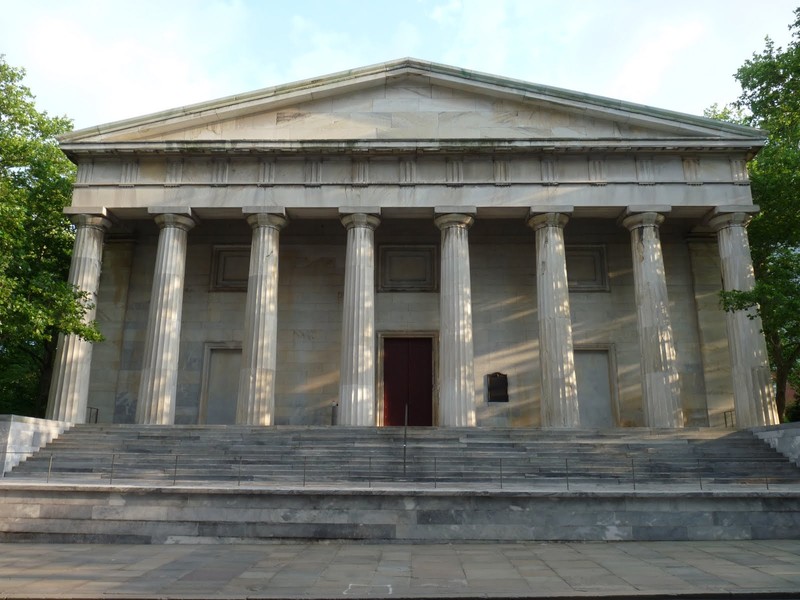
The building is now home to a portrait art gallery that features such prominent early Americans as Patrick Henry and Zebulon Pike.
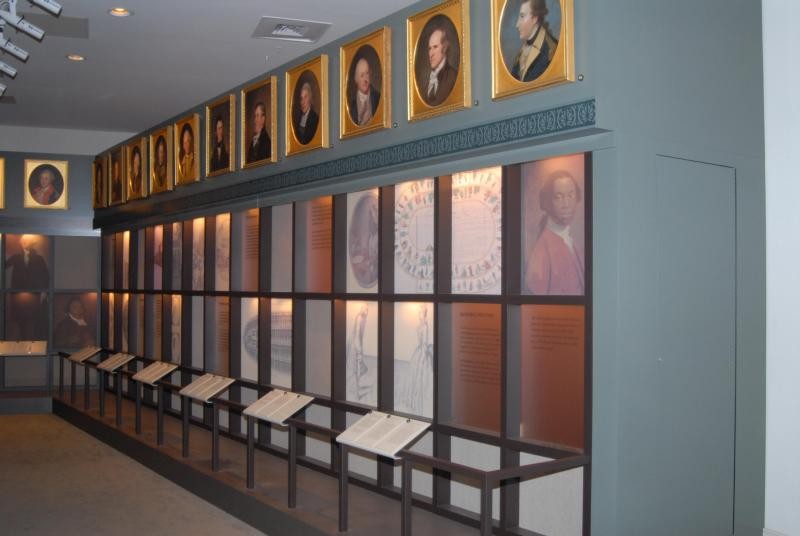
The building's barrel-vaulted ceiling is one of the few remaining original features.
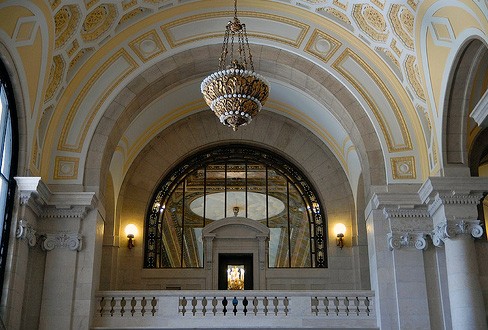
A 19th century political cartoon that references President Jackson's successful efforts to destroy the Second Bank of the United States.
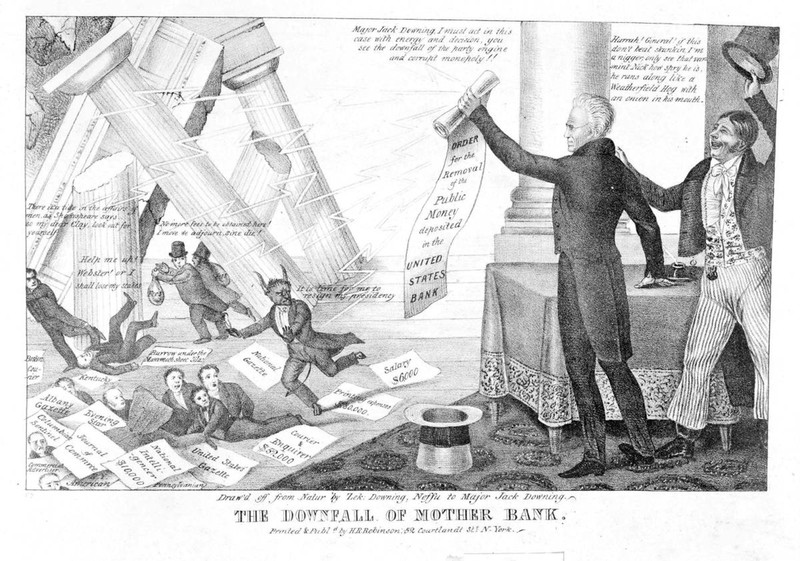
Ironically, the man who eliminated the country's second national bank, to include its centralized currency, now graces one of our most popular bank notes.
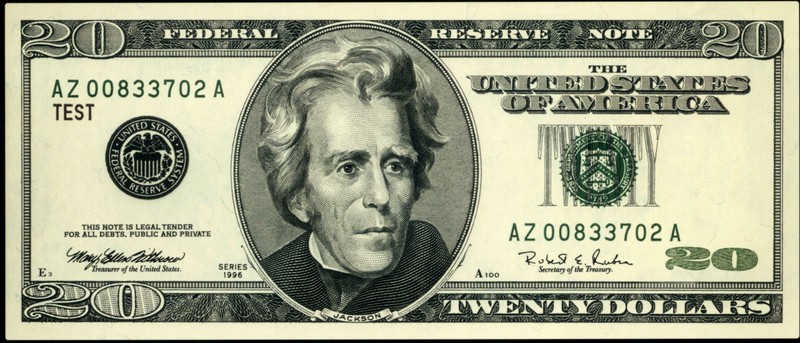
A 19th century political cartoon in which President Jackson "slays the many headed monster." The heads represent the states who supported the bank as Jackson wields a "veto" cane.
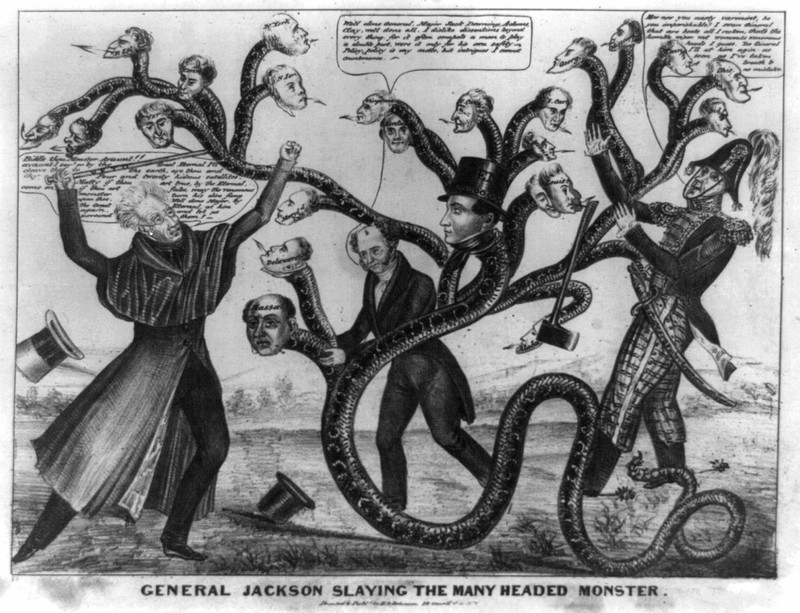
Backstory and Context
Text-to-speech Audio
The United States came out of the War of 1812, which ended in 1815, in financial difficulty. It was in severe debt and state and local banks were causing chaos by being permitted to print their own bank notes. As a result, the push for a second national bank gained momentum, led by financiers John Jacob Astor, Jacob Barker, Stephen Girard, and David Parish and politicians Alexander Dallas and John C. Calhoun, and it was created with the stroke of President James Madison’s pen in 1816. Modeled after Alexander Hamilton’s First Bank, it opened its doors in January of 1817 and was responsible for all the financial transactions of the United States’ Government. It was also tasked with regulating the notes and credit issued by private and state banks, establishing a stable and secure national currency and controlling inflation, among other things. By 1832, it had established 25 branch offices in cities such as Boston, St, Louis, and Lexington.
The bank came under severe criticism after the Panic of 1819, an extended recession that caused severe credit restrictions and massive unemployment. The bank’s reputation and standing was temporarily rebuilt under the guidance of its third president, Nicholas Biddle, and it was on sound footing by Andrew Jackson’s first inauguration in 1829. The bank’s constitutionality had also been established by the Supreme Court’s ruling in the McCulloch v. Maryland case of 1819. However, President Jackson still viewed the bank as unconstitutional and a corrupt institution run by the country’s elite.
The bank became a major campaign issue during the election of 1832 as Jackson’s opponent, Henry Clay, sought its re-charter four years prior to its expiration. Jackson acted quickly when he vetoed the re-charter and then withdrew all federal funds from the bank after he was re-elected. The bank limped along until its original charter expired in 1836, when it became a private institution which was eventually liquidated in 1841.
The building itself was designed by American architect, William Strickland, in the Greek Revival style. Strickland’s design was chosen over his mentor’s, Benjamin Latrobe. Strickland also designed the Merchants’ Exchange Building which sits a few blocks away. He used the Greek Parthenon as his model, including wide stairs leading to its main level and huge Doric columnns. It was constructed with Pennsylvania blue marble from 1819-1824.
The building served numerous functions after the bank was not re-chartered, to include the Custom House of Philadelphia. Over the years, its interior was drastically altered and the only original items include its barrel-vaulted ceiling, marble columnns in the main room, and the side fireplaces. It now is home to an art gallery that focuses on the portraits of famous early Americans, many done by Charles Wilson Peale. The portraits include many well-known figures, such as Thomas Jefferson, James and Dolley Madison, and Alexander Hamilton.
Sources
Hill, Andrew. "The Second Bank of the United States (1816-1841)." Federal Reserve History. Accessed December 27, 2016. http://www.federalreservehistory.org/Events/DetailView/95
"Second Bank of the United States." National Park Service. Accessed December 27, 2016. https://www.nps.gov/inde/learn/historyculture/places-secondbank.htm
"The Second Bank of the United States." Boundless. Accessed December 27, 2016. https://www.boundless.com/u-s-history/textbooks/boundless-u-s-history-textbook/democracy-in-america-...
